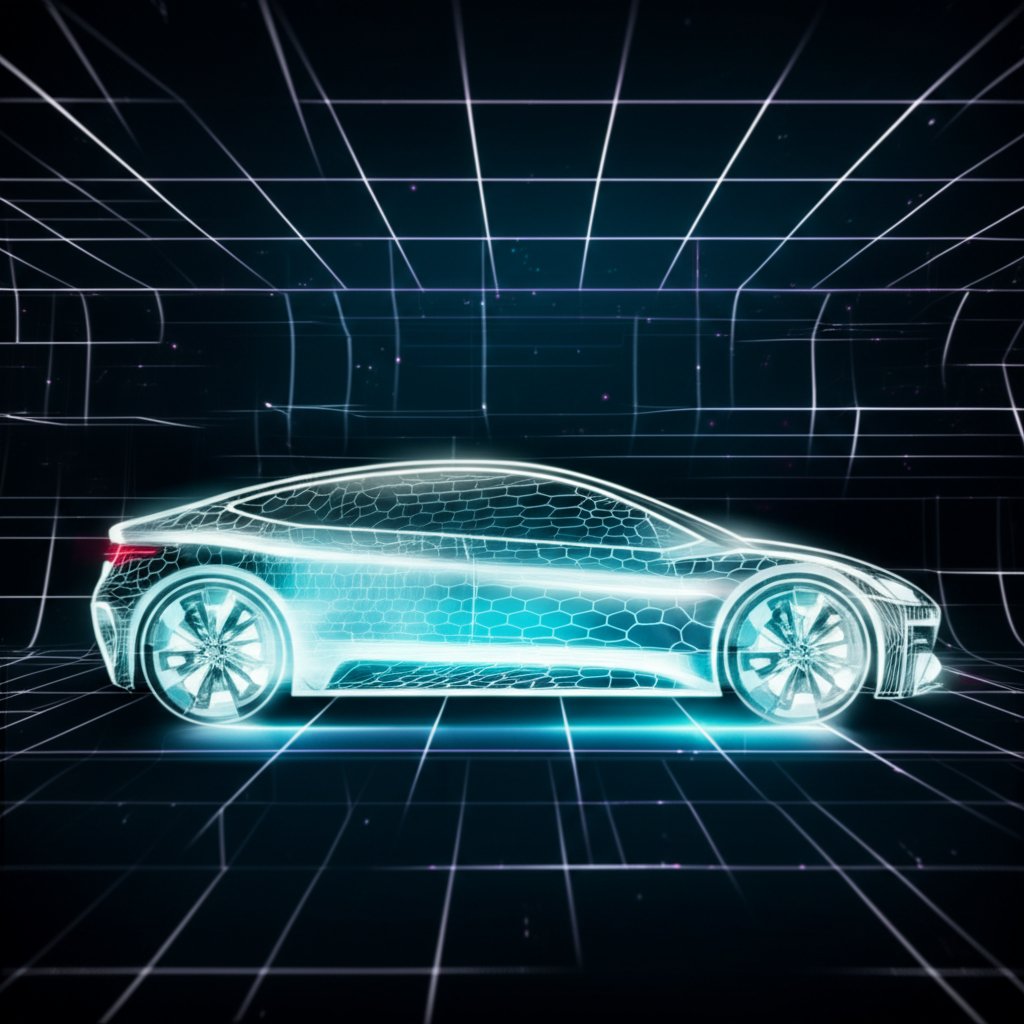Why Aluminum Is Essential for Autonomous Vehicles

TL;DR
The future of aluminum in autonomous vehicles is secure and expanding, driven by the critical need for lightweight materials. Aluminum's low density is essential for improving the energy efficiency and battery range of electric platforms that underpin autonomous technology. Furthermore, its strength, recyclability, and ability to enhance vehicle responsiveness make it a cornerstone material for developing safer, more sustainable, and higher-performing autonomous systems.
The Critical Role of Lightweighting in Autonomous and Electric Vehicles
In the pursuit of next-generation mobility, reducing vehicle weight—a strategy known as lightweighting—has become a fundamental engineering priority. This is especially true for electric vehicles (EVs) and autonomous vehicles (AVs), where every kilogram of mass directly impacts performance, safety, and operational efficiency. The relationship is straightforward: a heavier vehicle requires more energy to accelerate, decelerate, and maneuver. For EVs, this increased energy demand translates directly to a shorter battery range, one of the most significant concerns for consumer adoption.
By systematically reducing a vehicle's overall mass, manufacturers can extend how far it travels on a single charge. As highlighted by industry leaders like Novelis, an aluminum-intensive vehicle body can be up to 45% lighter than a comparable one made from steel, while maintaining stiffness and strength. This weight reduction not only boosts range but also creates a positive feedback loop; a lighter vehicle can be equipped with a smaller, less expensive battery pack to achieve the same performance, further reducing weight and cost. This principle is a key enabler for making EVs more accessible and practical for a broader market.
Beyond energy efficiency, lightweighting is crucial for enhancing the dynamic performance and safety of autonomous vehicles. A lighter vehicle is inherently more agile, able to respond more quickly to the complex commands from its autonomous driving system. This improved responsiveness is vital for emergency maneuvers, such as sudden braking or obstacle avoidance. With less inertia to overcome, the vehicle can execute the precise, rapid adjustments dictated by its sensors and processors, leading to a safer driving experience. Aluminum's high strength-to-weight ratio allows for the design of robust vehicle structures that protect occupants without adding unnecessary mass, optimizing both agility and crashworthiness.
Key Advantages of Aluminum for Modern Vehicle Design
While lightweighting is the primary driver, aluminum offers a host of other material properties that make it exceptionally well-suited for the demands of autonomous and electric vehicles. These advantages work in synergy to create vehicles that are not only efficient but also safer, more durable, and more sustainable.
Enhanced Safety Through Superior Energy Absorption
In the event of a collision, a vehicle's structure must be able to absorb and dissipate kinetic energy to protect its occupants. High-strength aluminum alloys excel in this role. When properly engineered, aluminum structures can absorb twice the crash energy of mild steel, a critical safety advantage. This allows automotive engineers to design crash management systems and body structures that provide exceptional protection while contributing to overall weight reduction.
Durability and Corrosion Resistance
Aluminum naturally forms a protective oxide layer on its surface, which makes it highly resistant to corrosion and rust. This inherent durability is a significant advantage over traditional steel, which requires heavy and costly coatings for protection. For long-life components, especially those exposed to the elements like battery enclosures and chassis parts, aluminum's resistance to environmental degradation extends the vehicle's lifespan and reduces maintenance needs, as noted by sources like National Material.
Unmatched Sustainability and Recyclability
As the automotive industry pivots towards a circular economy, material choice becomes a critical component of sustainability. Aluminum is infinitely recyclable without any loss of its properties. The process of recycling aluminum is remarkably efficient, consuming only about 5% of the energy required to produce primary aluminum. This results in a corresponding 95% reduction in greenhouse gas emissions, according to a report shared by PR Newswire. By designing vehicles with aluminum, automakers can significantly lower the lifecycle carbon footprint of their products and create a closed-loop manufacturing system.
Innovations in Aluminum: From Advanced Alloys to Manufacturing
The expanding role of aluminum in autonomous vehicles is not just due to its inherent properties but also to continuous innovation in material science and manufacturing processes. These advancements are unlocking new possibilities for vehicle design, enabling stronger, lighter, and more complex components that were previously unfeasible.
Metallurgists are developing advanced aluminum alloys, such as those in the high-strength 6xxx and 7xxx series, that offer unprecedented levels of strength and formability. These new alloys allow designers to use less material to achieve the same or even greater structural integrity, pushing the boundaries of lightweighting even further. These materials are particularly crucial for safety-critical components like the vehicle's body-in-white (the core structure) and battery enclosures, which must protect the vehicle's most vital systems.
Simultaneously, manufacturing techniques are evolving. Advanced aluminum extrusion, for example, allows for the creation of intricate, multi-functional profiles that can replace multiple steel parts with a single, lighter component. As detailed by experts at Minalex, this consolidation simplifies assembly, reduces joining points, and enhances structural rigidity. For automotive projects demanding such precision-engineered components, considering custom aluminum extrusions from a trusted partner can be a strategic advantage. Companies such as Shaoyi Metal Technology offer comprehensive services, from rapid prototyping to full-scale production under strict IATF 16949 quality systems, delivering highly customized parts. You can discover how their advanced capabilities can streamline manufacturing. Other emerging technologies, like 3D printing of aluminum parts and the development of self-healing alloys, promise to further revolutionize how vehicles are designed and built.

Addressing the Challenges: Cost, Repairability, and Material Trade-offs
Despite its clear advantages, the widespread adoption of aluminum in vehicles involves navigating certain challenges and engineering trade-offs. Providing a balanced perspective is key to understanding its role in the industry. Automakers must weigh factors such as cost, repair processes, and specific material properties when deciding between aluminum and other materials like steel or carbon fiber.
One of the most frequently cited concerns is the higher initial cost of raw aluminum compared to steel. This cost difference can influence the final price of the vehicle. However, the total cost of ownership is more complex. Aluminum's manufacturing efficiencies, such as part consolidation through extrusions and the elimination of anti-corrosion treatments, can offset some of the upfront material expense. Furthermore, the value of improved energy efficiency and extended range provides a long-term benefit to the consumer.
Repairability is another important consideration. Aluminum has different material properties than steel, and repairing collision damage requires specialized equipment, training, and techniques. In the early days of aluminum-bodied vehicles, this presented a significant hurdle. Today, the automotive repair industry has largely adapted, with established procedures and certified repair networks capable of properly restoring aluminum structures. While the process may differ from steel repair, it is a well-understood and manageable aspect of modern vehicle service.
The Road Ahead: Aluminum as the Bedrock of Future Mobility
As the automotive industry accelerates toward an autonomous and electric future, the strategic importance of aluminum is undeniable. Its unique combination of lightweight strength, safety performance, durability, and sustainability makes it an enabling material for the next generation of vehicles. The imperative of lightweighting to maximize battery range and enhance autonomous system responsiveness places aluminum at the center of modern vehicle design.
According to a survey by The Aluminum Association, aluminum content is projected to grow to an average of 556 pounds per vehicle by 2030, with significant growth in applications like battery housings, e-motors, and structural components. This trend is not merely a material substitution but a fundamental shift in design philosophy. Ongoing innovations in alloys and manufacturing will continue to overcome existing challenges, making aluminum an even more compelling choice for automakers striving to meet ambitious goals for performance, safety, and environmental responsibility.
Frequently Asked Questions
1. Why aren't all cars built entirely out of aluminum?
While aluminum offers many benefits, vehicle manufacturing involves a series of complex trade-offs. The primary reasons not all cars are made entirely of aluminum include the higher raw material cost compared to steel, which can impact the final vehicle price. Additionally, repairing aluminum requires different tools and training than steel, which has historically been a consideration for the service industry. Engineers often employ a multi-material approach, using the right material in the right place to optimize for cost, performance, and safety.
2. What will aluminum be used for in the future of vehicles?
Aluminum's role is set to expand significantly. Beyond its current use in body panels and engine blocks, it is becoming the material of choice for critical EV and AV components. Key future applications include battery enclosures, which protect the battery pack and assist with thermal management. It will also be used extensively for the main vehicle structure (body-in-white), subframes, and suspension components to reduce weight. Furthermore, aluminum housings for autonomous sensors, processors, and e-motors are growing in prominence due to their light weight and heat dissipation properties.
 Small batches, high standards. Our rapid prototyping service makes validation faster and easier —
Small batches, high standards. Our rapid prototyping service makes validation faster and easier — 
